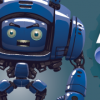 |
Less Is More: Picking Your Test Automation Language It's a classic dispute: Two test automation engineers can't agree on which programming language to use. In some contexts, the strong points of a certain language definitively make it the right choice, but what do you do when either language could work well for a project? That's when it becomes a managerial decision.
|
|
 |
Why Every Software Tester Should Watch Pulp Fiction The 1994 movie Pulp Fiction is a modern classic. And its eclectic dialogue, groundbreaking cinematography, and dramatic flair actually provide good inspiration to talk about a few things every tester has probably experienced in his or her career. Here’s how plot points and film techniques in Pulp Fiction mirror some experiences in software testing.
|
|
 |
4 Ways to Boost Your Test Process with Service Virtualization One of the major challenges in software development is ensuring that all the software components needed to do integration and end-to-end testing are available in the test environment. Implementing service virtualization can remove environment setup as a blocking condition—and enable project teams to release better software, faster.
|
|
 |
One Experience with Ubertesters, a Mobile Test Management Platform Many companies creating mobile apps struggle to find the time to test on a variety of devices, organize bug reports, and resolve issues efficiently. Andrew White’s organization tried Ubertesters, a platform that provides a team of mobile testers and a set of features for feedback. This is his account of how it affected their test process.
|
|
 |
Overcoming Cognitive Friction to Engineer Better Software The problems customers face are difficult to anticipate while developing software. However, looking at support issues can give a clearer idea about how to look for defects in the future. Sometimes users don’t know how to find certain information; other times, software doesn’t work as expected. In both cases, cognitive friction is at play.
|
|
 |
ADC West 2015 Keynote: Lean UX: Turn User Experience Design Inside Out When developing products, features, and enhancements, you have to have your customers’ best interests at heart. “We’re not just creating software,” speaker Jeff Patton said. “We’re changing the world.” You need to better understand the people you’re building things for, and the only way to do that is to spend more time with them.
|
|
 |
BSC West 2015 Keynote: Better Thinking for Better Software: Thinking Critically about Software Development Software developer Laurent Bossavit delivered the second keynote presentation, about why we need to think more critically about software development. He began his presentation by saying his intention was to make you question what you know—or what you think you know.
|
|
 |
Automation That Learns: Making Your Computer Work for You It's been suggested that because automation can only do checking, automation cannot learn. But if you're talking about the acquisition of knowledge through experience and study, Jeremy Carey-Dressler believes automation can, in fact, learn—with a tester adding some additional code to capture and analyze more available data.
|
|
 |
Being the Devil’s Advocate for Software Quality What if someone were to say that most of the time, quality does not matter? That you should only aim for the minimal amount of investment in testing to get the product out the door to start making money? Here, Rob Cross takes the “devil’s advocate” position and provides some arguments against striving for quality. How would you refute them?
|
|
 |
Guide Your Agile Development with Traceable Tests Testing professionals who are learning about agile often want to know how they can provide traceability among automated tests, features, and bugs and report on their testing progress. Here, Lisa Crispin gives an example of how her previous team worked together to integrate testing with coding and helped everyone see testing progress at a glance.
|
|

